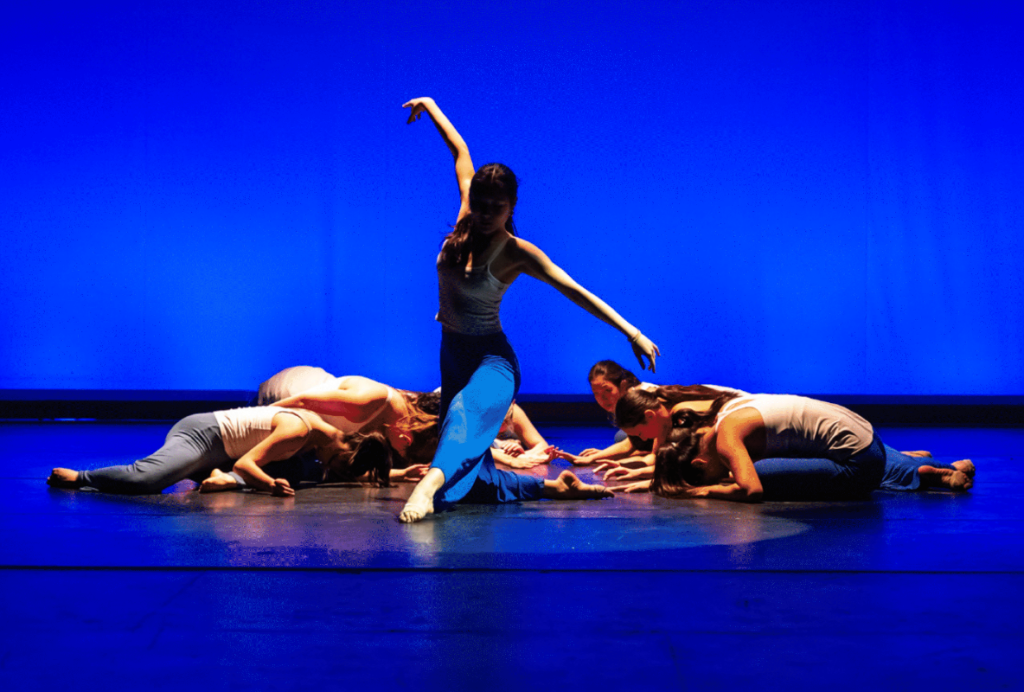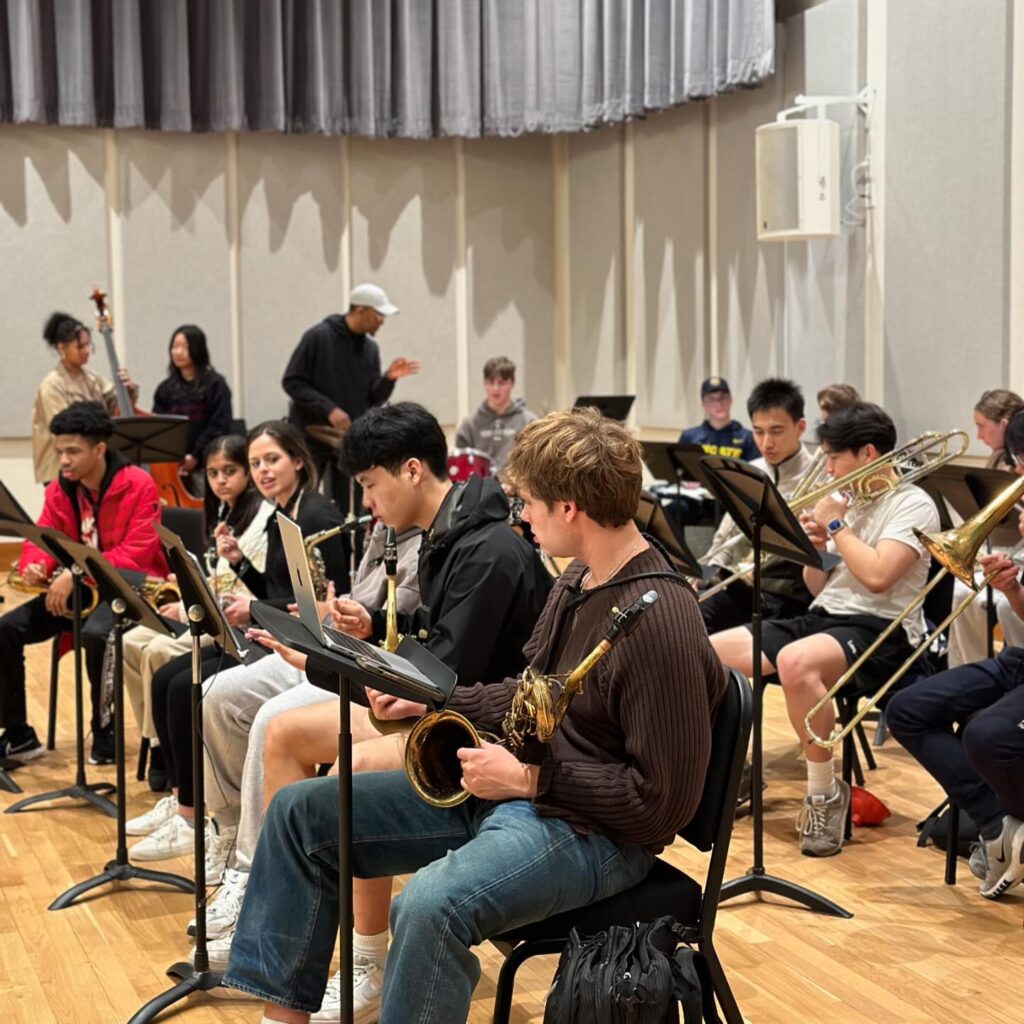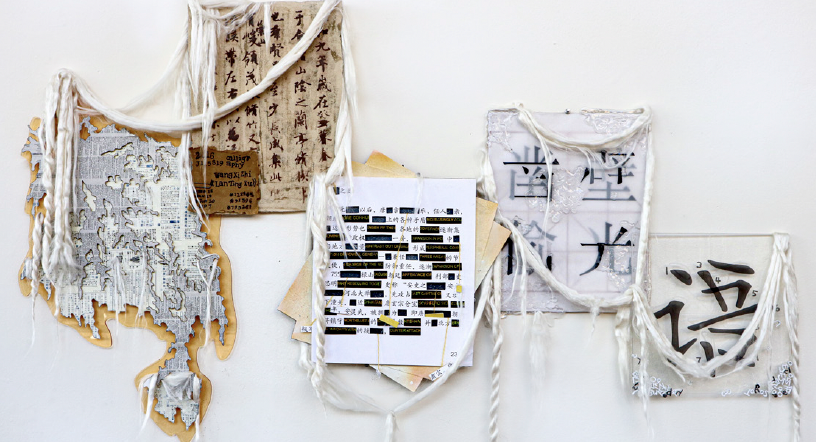
Chong’s “The Death of a Native Tongue,”which was featured in the exhibition at National YoungArts Week in Miami.
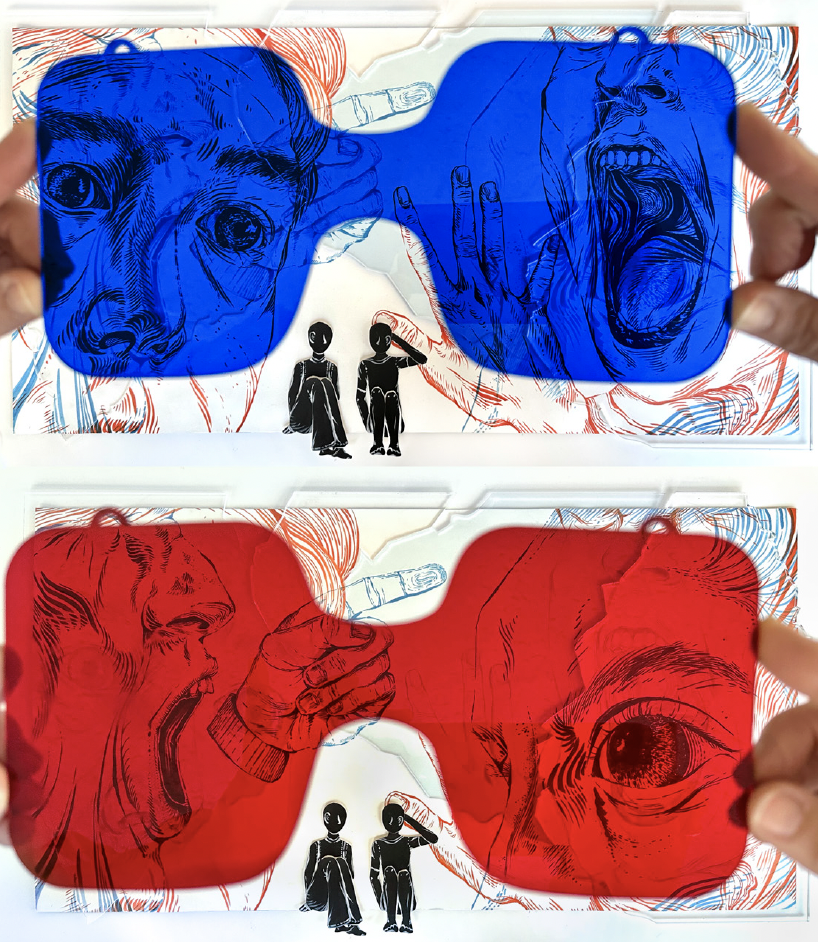
Chong’s “Status Quo(s),” which explores color emission and perception, features red and blue lasercut plexiglass.
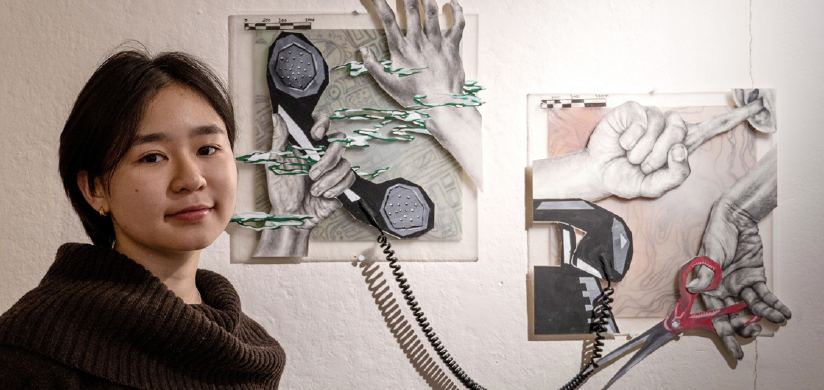
Chong’s “The Life You Can Save” mixed media piece on display in the Paul Mellon Arts Center Gallery.
By Grace LaPlaca ’25
Bent over a fresh canvas, framed on either side by bottles of paint strewn messily across the table, Katherine Chong ’25 begins work on her newest piece.
Chong, an Arts Concentration student with a focus on visual art, was first introduced to the medium as a child via classes in sketching, oil painting, watercolor, and acrylic paints. These classes required her to produce complete pieces in a short two hours, often leaving Chong unsatisfied with her work. Yet, it was this restrictive time frame that taught her to generate many ideas and develop strong skills in multiple traditional art mediums.
In seventh grade, during the Covid-19 lockdown, she discovered contemporary art. Unable to attend studio classes, Chong researched art online and discovered Ai Weiwei, a famous Chinese activist and artist. His commemorative piece about refugees, in which he installed lifejackets onto pillars of Berlin’s Konzerthaus, piqued Chong’s interest in untraditional materiality. Discovering Weiwei’s art was a watershed moment for Chong, and her perception of art shifted from a hobby to a medium for the expression of personal identity and social issues.
Likewise, her portfolio is composed of pieces that represent different social issues. One piece, titled “Occupy,” is about living on the margins of society. “If you’re not seen or witnessed, how are you occupied? How do you occupy space for yourself?” Chong asked.
Chong’s work addresses abstract concepts that may be difficult for those who aren’t experiencing them first-hand to understand. “My goal is to take art, and make this imagery memorable, substantial, something that is in your face,” she said. “But not too direct, like I’m telling you. I’m showing you. So it’s a method of persuasion and helping people be more empathetic and planting an idea.”
Chong also draws inspiration from personal biases. “I’m really interested in how people live through the same experiences and walk through the same world but have very different opinions based on their upbringing and backgrounds,” she said.
From January 8-12, Chong went to Miami for National YoungArts Week. She was one of 155 winners with distinction chosen from more than 9,000 applications across all artistic disciplines in the National Young Arts Competition. Different from other competitions where winners are chosen based on one piece of artwork, YoungArts requires applicants to submit an entire portfolio, including meditations on each piece and an artist statement, to judge each artist holistically. In Miami, Chong and other winners attended workshops and performances. She also met with the panelists who selected her work, interacted with other winners, and presented her work at an exhibition.
Meeting the panelists was particularly memorable for Chong. She noted the unusual nature of their first meeting: unlike most interactions, where people see the external factors of a person first, the panelists were introduced to her through her most personal, vulnerable ideas. “They saw all the things that were most intimate and deep to me first,” she said. “They saw what I care about and what I do.”
Chong submitted eight pieces that showcased her versatility as an artist. For example, a piece entitled “Status Quo(s),” explored color emission and perception. Part of the piece was drawn in red marker, while the other was drawn in blue. She submitted multiple serial images of this work, one taken through a red-tinted lens and the other with blue, to show the work comprehensively.
Another one of her submissions, titled “The Death of a Native Tongue,” is about native language attrition, which is the process of forgetting one’s native language. Chong drew inspiration from her own experiences as an international student and the process of losing fluency in her native tongue, Chinese. “It’s trying to capture that feeling and memorialize the cultural connection that I’ve lost over the years,” she said.
The time frame for completing her pieces ranged from two weeks to multiple months. Her submission was a culmination of her work in Arts Concentration for the past two years, as well as over the summer.
Chong carefully considers the materials she uses in her work. For example, she is particularly drawn to paper and its ability to record history. “When you fold paper, the creases never go away,” she said. “I think it’s very romantic, how paper is a literal vessel for memory and experience, especially weathered paper.”
On the other hand, she also integrates plastic into her work. To Chong, the artificiality and flexibility of plastic stands in juxtaposition to the organic qualities of paper. Combining the two very different materials speaks to the abstract nature of her ideas and articulates the intangible social forces that fascinate her.
Chong’s ultimate goal for her art is for it to be a medium of societal change and make people more reflective and aware of certain issues. “Art is a great medium for that,” she said. “It’s taught me so much about how to bring something to life, how to test materials, how to elicit ideas and speak to people about my creations.”

